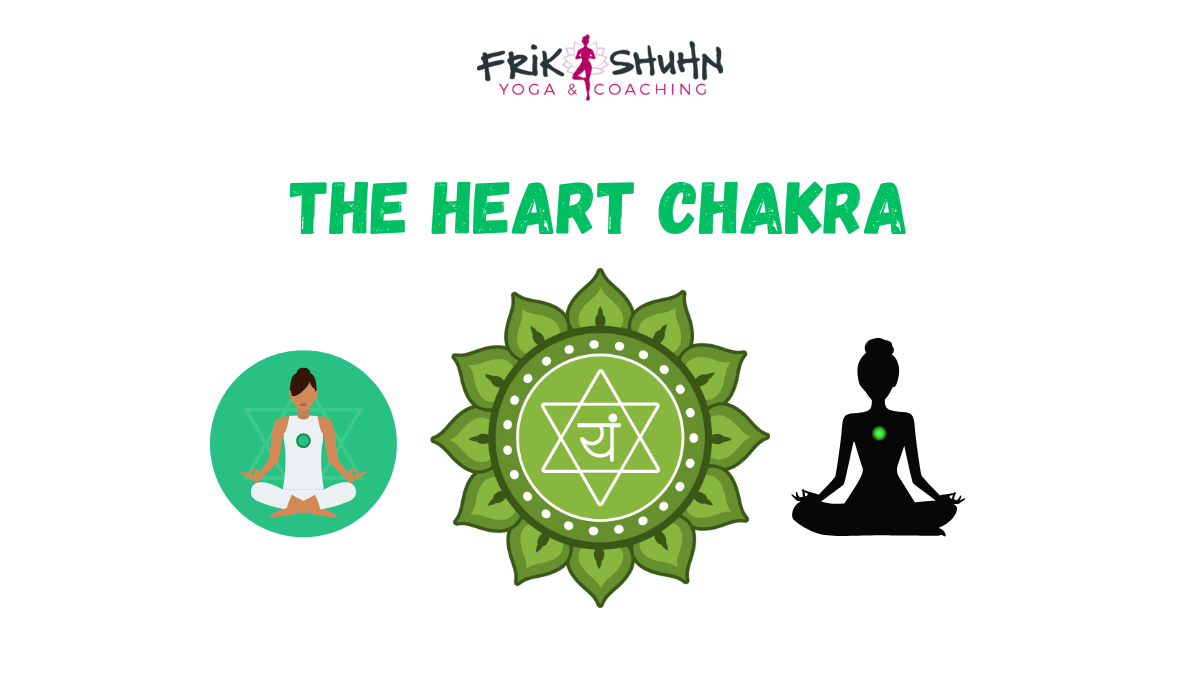Heart Chakra: Compassion as Biology & Embodied Connection

Discover the heart chakra as compassion in action. Learn yoga and somatic practices that open the chest and regulate the nervous system.
💚 Heart Chakra: Compassion as Biology & Embodied Connection
Have you ever walked out of a yoga class feeling lighter, more open, and somehow more compassionate toward yourself and others? That’s the magic of the Heart Chakra (Anahata) — and it’s not just magic. It’s measurable.
The heart chakra is the center of love, compassion, and connection. Located at the center of the chest, it bridges the lower, earth-bound chakras with the upper, more spiritual ones. In yogic philosophy, Anahata is the meeting place of the human and the divine. In modern science, it’s where the cardiovascular system, lungs, thymus gland, and vagus nerve work together to regulate our health and our capacity for empathy.
When Anahata is balanced, we feel open, generous, and connected. When blocked, we might feel isolated, heavy-hearted, or unable to trust. When overactive, we might give too much, ignoring our own needs.
This blog explores how the heart chakra bridges yoga and science, how somatic practices nurture compassion, and how teaching from Anahata transforms both teachers and students.
Yoga Meets Science: Anahata as the Bridge
In Sanskrit, Anahata means “unstruck.” It refers to the sound that arises without contact — the resonance of pure compassion. Yogic texts describe this chakra as the seat of unconditional love.
Science gives us tangible parallels:
-
Heart Rate Variability (HRV): A measure of how adaptable our nervous system is. Higher HRV correlates with resilience, compassion, and emotional regulation.
-
Oxytocin: Known as the “bonding hormone,” oxytocin is released through touch, kindness, and connection.
-
Vagus Nerve: A central player in the parasympathetic nervous system, connecting heart, lungs, and digestion. It supports calm, connection, and trust.
When we practice heart-centered yoga, we’re not only expanding emotionally — we’re improving HRV, stimulating oxytocin, and toning the vagus nerve. Compassion is not just a feeling; it’s biology in action.
The Somatic Lens: Feeling the Heart
Somatically, the heart chakra lives in the chest, ribs, upper back, and arms. Signs of imbalance include:
-
Collapsed posture, rounded shoulders
-
Tightness or heaviness in the chest
-
Shallow breathing
-
Feeling guarded or disconnected from others
When Anahata is open, the chest expands, breath deepens, and posture naturally lifts. Students often describe a sense of lightness or spaciousness after heart-focused practices.
The question to ask somatically is: What does it feel like to open my heart? Where does my body resist? Where does it soften?
Practices & Examples: Awakening Anahata
Here are ways to bring heart chakra awareness into practice:
Asana
-
Camel Pose (Ustrasana): Opens chest, strengthens back body.
-
Bridge Pose (Setu Bandhasana): Heart and hip opening together.
-
Supported Fish Pose: Passive chest opener for releasing tension.
-
Eagle Pose (Garudasana): Stretches upper back, balancing giving and receiving.
Breathwork
-
Heart-Centered Breath: Inhale into chest, exhale with a sigh.
-
Coherent Breathing: Inhale for 5, exhale for 5 — enhances HRV.
Somatic Practices
-
Hands to Heart Center: Feel warmth and pressure of palms.
-
Partner Practices: Eye contact and synchronized breathing to stimulate oxytocin.
Journaling Prompts
-
“What helps me soften toward myself?”
-
“Where do I give too much, and where do I withhold?”
-
“What relationships feel supportive of my heart?”
Transformation & Teaching
For yoga teachers, teaching from the heart chakra is about more than cueing backbends. It’s about cultivating an environment of safety and compassion.
You might say: “As you inhale, imagine your rib cage expanding with light. As you exhale, soften into your own compassion.” Or, “Notice how your breath changes when your chest opens. Let that breath remind you of your own capacity to care.”
By tying emotional language to physical experience, you help students embody compassion instead of just conceptualizing it. This is how yoga becomes transformational.
Why Heart Work Matters Now
The world is hungry for compassion. Disconnection, polarization, and stress have left many of us guarded and isolated. Heart-centered practice reminds us that love and connection are not luxuries — they are necessities for resilience and health.
Science confirms this: higher HRV, oxytocin release, and vagus nerve activation all contribute to reduced stress, better relationships, and longer life. Yoga gave us the practices long before the studies existed, but now the research affirms it.
Ready to embody compassion in practice and teaching? Here are your next steps:
✨ Immerse yourself in the 50-Hour Chakra Teacher Training at Anamaya in Costa Rica. Explore the heart chakra and others through experiential somatic practices in a supportive, transformational setting: Learn More Here
✨ Download the Free Chakra PDF for a science-meets-yoga guide to all seven chakras: Get Your Copy
✨ Unlock full access to the Awakening the Chakras YTT online and every other YTT I offer inside the Experiential Teacher Path subscription for $297/month. All hours count toward your 300-hour certification: Join Here
Final Reflection
The Heart Chakra teaches us that compassion isn’t just emotional — it’s embodied. It’s how our breath expands, how our posture shifts, how our nervous system regulates. When we practice yoga from the heart, we’re not only opening physically; we’re literally changing our biology.
Yoga says love is the highest state. Science shows compassion is medicine. Together, they invite us into a practice where every breath becomes a bridge — to ourselves, to others, and to the wider world.
 Colynn Vosburgh
Colynn Vosburgh 